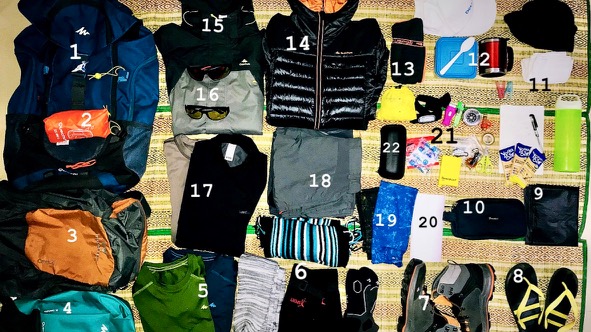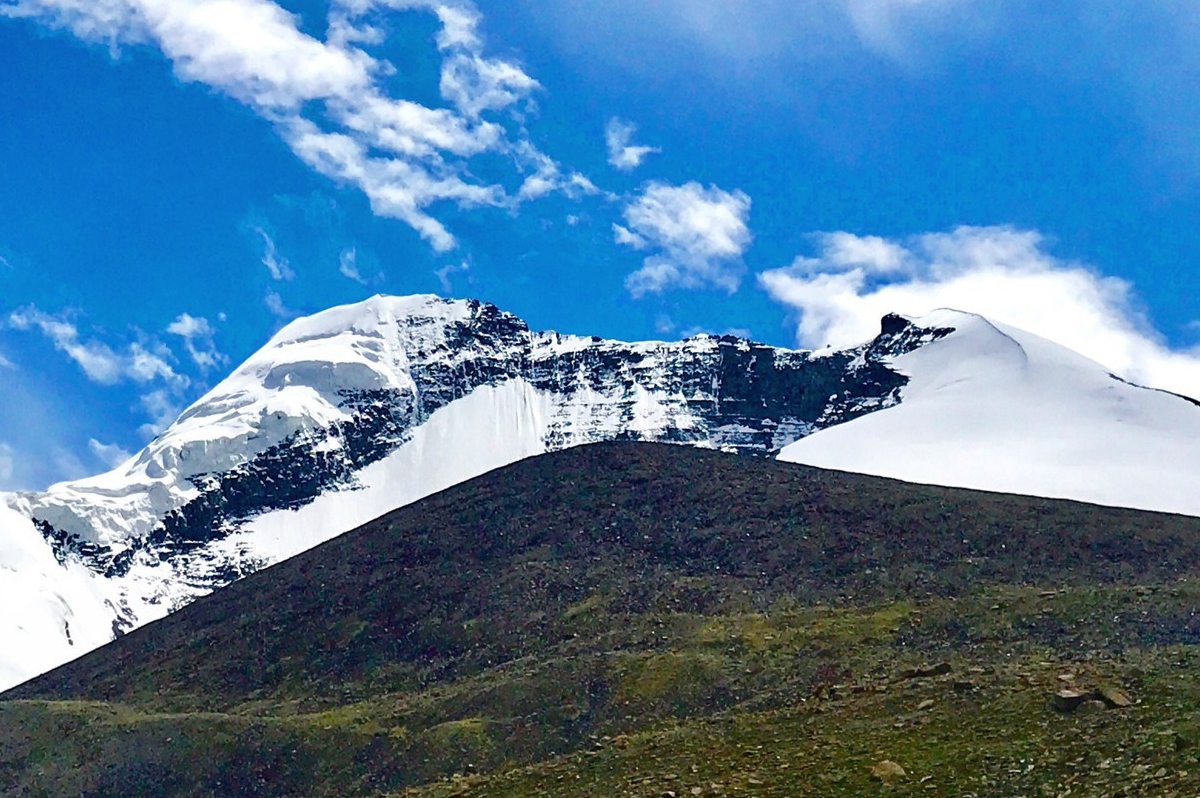And finally, after months of contemplation and efforts, I could manage to do my first high altitude trek. A lot of questions revolved around my mind when I planned to invest nearly all my vacation days in a solitary, outlying place in the depths of Himalayas. I thought of sharing some common concepts here about high altitude treks. Inbox me if you still have any questions.
Idea in mind
The whole idea of a trek erupted after I read a Facebook ad about Stok Kangri by an adventure group emphasizing the statement- ’Highest trekkable peak in India’. Such ads quite excite the target audience like me. I did a real good research on what this peak is, whose name I haven’t ever heard of. Web search dictates this peak as one of the highest trekkable destinations in India with a cloud touching altitude of 6153m. Six thousand meters! The highest I had ever done till that date was 4200m in Himachal and never thought that some normal naive trekker with limited climbing experience can summit a SIX THOUSAND meters peak. It really excited me to dig further about it.
Further reading and a few discussions with diverse adventure groups suggested that Stok Kangri has become a commonplace. People don’t even get proper place to erect their tents at the base camp. And indeed, it is very much crowded. You won’t be able to figure out if your tent is on a poop. Even people who haven’t got trained enough for the trek attempt the summit. They face the consequences later. Neverthless, the word ‘CROWDED’ itself drained all my interest in this peak and I began my search for similar such peaks in India. As a matter of fact, the peaks in 6000m club are mostly at Ladakh. I found a couple of others, certified as ‘trekkable or require minor mountaineering skills’. These peaks were namely Kang Yatse 2 in Markha valley (6250m. Remember, Kang Yatse 1 at 6400m is very much technical.) and Mentok Kangri (6400m) in Tso Moriri region of Ladakh.
Kang Yatse 2 or any such high altitude peak for that matter, I later learned, is not that straight forward and requires you to build quite a good amount of endurance, strength and stamina. If you are going there without getting trained, you might end up quitting even before you reach the base camp. In many circumstances, one might face AMS as well. So beware to do your homework starting a couple of months before the start of your trek. I did a lot of crossfit sessions and running sessions before I considered myself fit for it.
READ: My adventures during Kang Yatse 2 trek
Reason to train
Okay. I got your question. Why do we need training?
In the Himalayas, it’s not just about going down the trail. After a certain altitude (say 2500m), human body faces the effects of altitude. This is because of the decrease in environmental air pressure as the altitude increases, which results in decrease in the amount of oxygen. If your body doesn’t get the required amount of oxygen, it will not work efficiently. The brain itself, even though it weighs just 5% of the total body weight, uses around 15% of the oxygen the body gets.
Building physical endurance
Now how does training help?
- Proper cardio exercises like running, swimming or even cycling can help build the cardiopulmonary systems stronger and also build the required endurance. If your lungs have more capacity to hold oxygen, it will be beneficial where the oxygen is less.
- Breathing exercises will help you gain control over your heart beats.
- Some high intensity trainings like crossfit and boxing will make your body adapt to less amount of oxygen.
- A little strength training can add icing to the cake as you need to carry your own body weight plus the backpack up on the hills while ferrying from one camp to the other.
- Apart from this, it’s better if you follow a proper diet (not for reducing weight!!). Increase the intake of protein, iron, antioxidants and vital vitamins in your food. This will help build immunity and increase oxygen-carrying red blood cells in your body.
- Plus, a complete no-no to cigarettes and alcohol before a couple of months and during the trek.
Also READ: How to start running
Building mental endurance
Physical training is absolutely necessary but what most of the crowd miss out is a proper mental endurance. Due to high popularity and glamour such kind of expeditions carry, most of the people don’t understand the importance of mental preparation which is required. This is mainly because majority of the crowd is first timer for high altitude treks and have not been exposed to such unforgiving conditions before.
Following are some of the ways to build the same:
- Build confidence in yourself that you can do it. Be prepared for adverse weather conditions and the resulting effects on your body and mind.
- Visualize the game before starting it. Look for the complete picture, read the blogs by people who have already did the trek, converse with your trek leaders about diverse terrains to be encountered.
- Build your passion towards travel and motivate yourself and the team. As your brain might not function normally at higher altitudes leading to depression and negative vibes, it’s your will power and the control over your mind which will define your achievement in the end.
- Understand your limits and build tendency to accept failures. Even if you are not able to do it today, you can always come back with better preparation tomorrow. Mountain will always be there. At least, you will get to know your limits and the areas to work on.
Things to carry
For the summit day, you will require crampons/snow boots, gaiters, ice axe and a helmet which are normally provided by the adventure group you would be associated with. You are required to get your own basic trekking and winter gear. For me, the most difficult part was to decide on what to wear during the trek and how much to pack in the bag. It’s a common rule that your backpack should be light.
You should read about a real good explanation on the concept of layering of clothes here.
I carried the things mentioned below for the trek which I have shared on my Insta as well. I got nearly everything from Decathlon.

- 60L backpack
- Rain cover for the backpack (40-60L)
- 20-35L backpack (useful for the summit day)
- 10L daypack (useful in your initial acclimatization days)
- Couple of quick dry breathable t-shirts
- Couple of pairs of quick dry breathable socks for trek, woolen socks and one pair of woolen gloves (just in case), muffler
- Waterproof trekking shoes (>=5000mm. Make sure the midsole of the shoe is not very soft. For me, Forclaz 500 did the job. It costed me around 5000 bucks.)
- Flip-flops or sneakers (useful while on the camps)
- Biodegradable garbage bags (can be used as laundry dry bags as well)
- Toilet kit (sunscreen with >=40 SPF is most important)
- Notepad and pen, energy bars, reusable water bottles(2), napkins, head cap
- Tiffin box, cup, spoon
- Quick dry towel
- Down jacket (or a fleece jacket, for the cold)
- Waterproof and thus, windproof shell jacket (RET 12. This will not keep you warm. It will just protect you from wind and water.)
- UV protective polarized sun glasses (most important), night glasses (optional)
- Breathable inners or thermals
- Light weight hiking pants (couple of them will do)
- Baliclavas
- Identity documents (for permit to climb mountain)
- Headtorch (you will need it for the summit day and while on the camp), lighter, compass, camphors, insect repellant, playing cards, carabiners, scissors, clips, fevi sticks
- Medical kit
It was a mixed feeling of gamble, mystery, excitement and fear.
At an altitude of 6200m, this summit chase was my first ever high altitude trek. Proper training is required to conquer such a height, as already mentioned by me, and Cultfit helped me in my quest.
A lot of time, energy and money was spent for this trip and it is worth all the resources.
